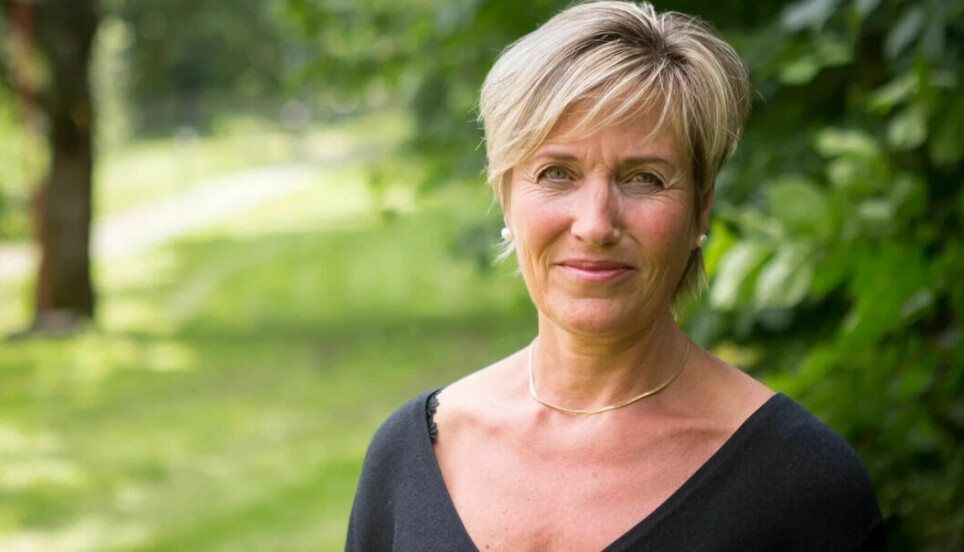
Narcissists feel overly self-important but are also very fragile, says psychiatrist
In the media, they are portrayed almost exclusively as arrogant and reckless. But people with narcissistic personality disorder also have another, often well hidden, side to their personality.
Many of us have met him or her as a boss, a friend or a partner.
They are self-centred and preoccupied with their power and success. And they demand constant admiration for what they do.
People with narcissistic personality traits can be very charming, but can also become extremely angry, hurt and uncomfortable if things don't go their way.
These traits can be challenging for people around them, but more recent understanding of this personality disorder shows that they also suffer.
There is often pain beneath the disagreeable behaviour.
More common than assumed
Norway has poor estimates of how many people have a narcissistic personality disorder.
Ingeborg Helene Ulltveit-Moe Eikenæs believes the disorder is probably much more common than previously thought.
Eikenæs heads the National Competence Service for Personality Psychiatry (NAPP).
“People who apply for treatment are difficult to assess. Narcissistic personality disorder is a taboo-ridden diagnosis, which makes it challenging to ask the right questions,” she says.
The tools that psychologists and psychiatrists have for making diagnoses focus mostly on external factors in narcissism. That is where the grandiose side of the personality comes out, says Eikenæs.
Can get help
Knowledge about narcissism has become more comprehensive in recent years.
Eikenæs and her colleagues are therefore intent on helping therapists and society as a whole become more up-to-date on the disorder.
To that end, NAPP recently organized a seminar on narcissism where a number of Norwegian and international researchers and practitioners presented their knowledge.
“We want to try to understand what lies beneath the disagreeable, and sometimes frightening, behaviour. This is absolutely necessary in order to understand and help people with the disorder,” says Eikenæs.
And they can get help.
Dual personality
Five-year-olds like to feel like they’re king or queen of the mountain. They think they’re the centre of the world. Eventually, the vast majority of children gain other experiences that correct this idea. They’ll find out that someone else may be just as good as they are at something, or even better.
Better diagnostic tools are on the way. They incorporate the updated view that these patients are both grandiose and vulnerable, says Eikenæs.
“Something has happened in childhood and during the development of the personalities of people with this disorder.”
Eikenæs explains:
“Five-year-olds like to feel like they’re king or queen of the mountain. They think they’re the centre of the world. Eventually, the vast majority of children gain other experiences that correct this idea. They’ll find out that someone else may be just as good as they are at something, or even better.”
These experiences need to be integrated into the personality in order to develop a healthy self-image, she says.
But some people have a genetic vulnerability. If they then also grow up in an environment that does not give them the important corrections, they could emotionally remain like a five-year-old in their minds.
They continue to believe that they are better than others.
‘The nameless narcissist’
For an adult with a narcissistic personality disorder, the grandiosity can be understood as compensation for a fragile self-image, explains Eikenæs.
“It’s a way to survive. A way to keep away from the uncomfortable truth and a fragile sense of self.”
During the seminar, a young man from the USA who calls himself 'the nameless narcissist' was interviewed. A longer version of the interview is available on YouTube.
He said that he was very emotional as a child. But at an early stage in his childhood, he decided to be tough and show no emotion. He wanted to protect himself.
He did this to such an extent that he lost the ability to show emotion.
When he was at a funeral as a ten year old, he realized that he was different from others. He thought it strange when the others wept and mourned. He almost felt ashamed at their 'hysterical' behaviour.
Today he is an adult and has been in therapy for several years. He has gained self-awareness and now makes videos on social media where he talks about himself and the personality disorder he suffers from.
He gets thousands of positive reviews of his videos, he said in the interview.
But if he receives just one negative comment, this can cause him to have a sleepless night. Then he becomes extremely self-critical.
Gap between inner and outer
Beneath the arrogance and self-confidence of someone with narcissistic personality disorder, there is often a lot of self-criticism, says Eikenæs.
The person may be more or less aware of this.
“Some people experience only fleeting self-criticism. Others experience it a lot. But the self-criticism is constantly there under the surface and controls the behaviour and the grandiose understanding of self.”
The gap between how a person with this personality disorder appears to the outside world and how the person feels can be huge, she says.
Very widespread
Narcissism is something we all have some elements of in our personality, with varying degrees of severity on a continuum from healthy to pathological, says Eikenæs.
“Narcissistic traits are found in many people with personality disorders, but nowhere near all of them meet the diagnostic criteria for narcissistic personality disorder,” she says.
“The traits are very widespread and range from individuals with antisocial traits, to those with emotionally unstable traits, often called borderline, and to others with avoidant personality traits.”
This personality disorder thus encompasses a broad spectrum of behaviours.
Some people just have limited traits.
For others, this can be a very serious disorder. The risk of suicide is high in this group.
“That’s why we hope that we’ll be able to help more people in the future,” says Eikenæs.
Will we see more people with these traits?
Scientists now know that narcissistic personality disorder is due both to genetic vulnerability and environment. This applies to all types of personality disorders.
“One hypothesis is that personality traits follow social development,” says Eikenæs.
“In our Western culture, we focus a lot on ourselves and our own stuff and not so much on the collective. This could perhaps trigger narcissistic traits in people who have a genetic vulnerability in a population.”
China is like a laboratory to test this hypothesis.
“Researchers have observed a change in China before and after the year 2000. Previously, introverted personality traits were preferred in the culture. People were expected to be cautious, polite and reserved,” Eikeinæs says.
But this has also changed in China, as shown by studies carried out on Chinese children over many years.
They have found that those with introverted traits have had much greater problems adapting socially today than they had in the past.
Being modest and polite and a little withdrawn was also considered good behaviour in Norway in the past. Now cheering on the individual is a much more widespread phenomenon in our culture.
The extrovert thus seems to have changed its status in Chinese culture.
Parallel in Norway
These are indicators of a societal development that is moving in the same direction as here in the West, where we are more extroverted and more concerned with ourselves and what’s ours, not the collective.
Here we can see parallels to Norwegian social development, Eikenæs believes.
“Being modest and polite and a little withdrawn was considered good behaviour in Norway in the past. Now cheering on the individual is a much more widespread phenomenon in our culture.”
She believes this has contributed to major changes in society.
“We generally think more about me and mine and less about what is all of ours. But whether narcissistic personality traits have become more frequent as a result of changes in culture, we as yet have no evidence to say. It’s currently still a hypothesis.”
———
Read the Norwegian version of this article at forskning.no
------



































